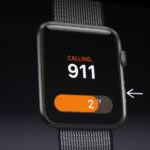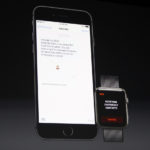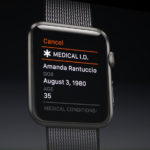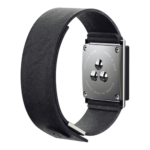Overview / Overzicht
Waneer De heer Pit heeft epileptische aanvallen, als hij alleen is heeft hij geen manier om hulp te krijgen. Wij zijn op zoek naar een personenalarmering systeem, met valdetectie, die zijn vrouw, ADL-assistent of buurman kan contact opnemen.
Te worden gebruikt zoals de heer Pit heeft een epileptische aanval dat hij hulp kan krijgen van zijn vrouw, ADL assistent, of buurman (geen meldcentrale abonnement).
De belangrijkste punten zijn:
• SOS knop met automatische spreekluisterverbinding.
• Automatisch valdetectie als hij niet in staat is om een SOS-knop te gebruiken.
• Op basis van GSM (mobile) with SMS en e-mail alerts.
• GPS tracking voor de locatie te vinden als hij niet thuis is.
Apple Watch: mobile Personal Emergency Response System (mPERS)
This is what I think is a better solution. I sent this e-mail to www.apple.com on 07/08/2013 with our hopes….
I am aware that Apple generally does not encourage product idea’s, but I wanted to give it a try, because it is rather important to us.
I’ve been following rumours about the iWatch, and can really see the potential for using it as a mobile Personal Emergency Response System (mPERS). I am aware that there are many different requirements and use case scenario’s in the mPERS sector, but I thought I would list ours, should it be something you are looking into for the iWatch, or any other wearable device.
I have been searching for a mPERS for my husband who has epilepsy and uses a wheelchair. He also has hemiparesis, weakness and loss of sensation on one side; hemispatial neglect, lack of awareness on one side; hemniopansia, lack of vision on one side; and difficulty with speech articulation. We are looking for something that will give him independence at home and in the community to be able to seek appropriate assistance if needed. So here goes for what we are looking for:
– A device that can be worn on the body with options for a lanyard, clasp, strap or wristband, that can pair wirelessly with an iPhone or iPad that is nearby the user.
– It should be water resistant so it can be used in the shower, and shock resistant minor bumps.
– An easily activated SOS or other distress signal, preferably that could accept touch (e.g., tap 3 times or an icon) and voice (e.g. saying “SOS”). This would be used if an “auroa” of a seizure is known in advance to send an alert.
– Fall detection with an accelerometer that can measure g-force, that can be configured based on user preference. This would be used if a seizure is in progress and there is no ability to communicate by touch or voice to send an SOS alert.
– Easy to configure contact information for up to 3 “on-call” responders at a time. This needs to be easily modifiable with an order of priority (e.g., 1st, 2nd, 3rd ).
– There should be an option to configure and automatically contact emergency services with an audible message, should there be no response from the “on-call” responders.
– When an alert is made an e-mail and SMS text message should be sent to all “on-call” responders. For other smartphone users, possibly this could be an “app”, but we will not always have control of what devices and apps they are using.
– A voice call should then be made, based on order of priority for “on-call” responders (e.g., 1st, 2nd, 3rd). If answered by a human, the voice call should automatically activate open “two-way” voice communication. If answered by an answering system, the alert should proceed to the next responder.
– The responder should then be able to accept or decline the alert, and automatically send an e-mail and SMS text message accept or decline status to the other responders .
– The user should also receive an audible signal of the accept or decline status, keeping open “two-way” voice communication for the next responder.
– The alerts should include location tracking information via Wi-Fi Positioning System (WPS) for use indoors (e.g. at home) and Global Positioning System (GPS) for use outdoors.
– If the user is not able to speak, an audible repeatable alert should be played including the location and other important information, such as medical conditions and door access codes should the alert be activating emergency services.
– It would be good to have a dashboard that can be configured for multiple profiles that include text and audible information to be sent with alerts.
– It would be useful if other devices, e.g., other iPhones and iPad’s using other logins could access the same dashboard.
– It would also be very useful if non-emergency profiles could be configured for general assistance that is needed. The use case scenario is when I am nearby and my husband needs assistance, so that I can know what priority and type of response I need to provide in advance. For example, if assistance is needed because he is stuck in a doorway, it will be a different response time than if he just want’s a beer. It would be nice if this was activated by touch (an icon) or voice (e.g., “stuck” or “beer”) and sent the same touch or voice alert to my iPhone or iPad.
Empatica Embrace
1. Event Detection
The Embrace watch is linked to the wearer’s mobile device with a Bluetooth® connection. This connection allows our systems to analyze the information and detect unusual events like convulsive seizures in real-time.
2. Alert Dispatching
The Alert app will be automatically activated when an event is detected by the Embrace watch. The App will send an alert notification to your caregivers using the mobile device’s cellular data or Wi-Fi connection.
3. Caregiver Notification
The Empatica systems will notify your caregivers one after the other to communicate the alert and ask if they can help. They only need a mobile phone with cellular signal to receive these notifications, no smartphone required.
4. Caregiver Alert
Your caregivers will be notified through an automated call and sms. You can add multiple caregivers into the App so that there is always someone who can help you.




